


January 12, 2020
PAVEL MADZHAROV
–––––––––––––––––––––––––––
Organ Music and Building in Bulgaria
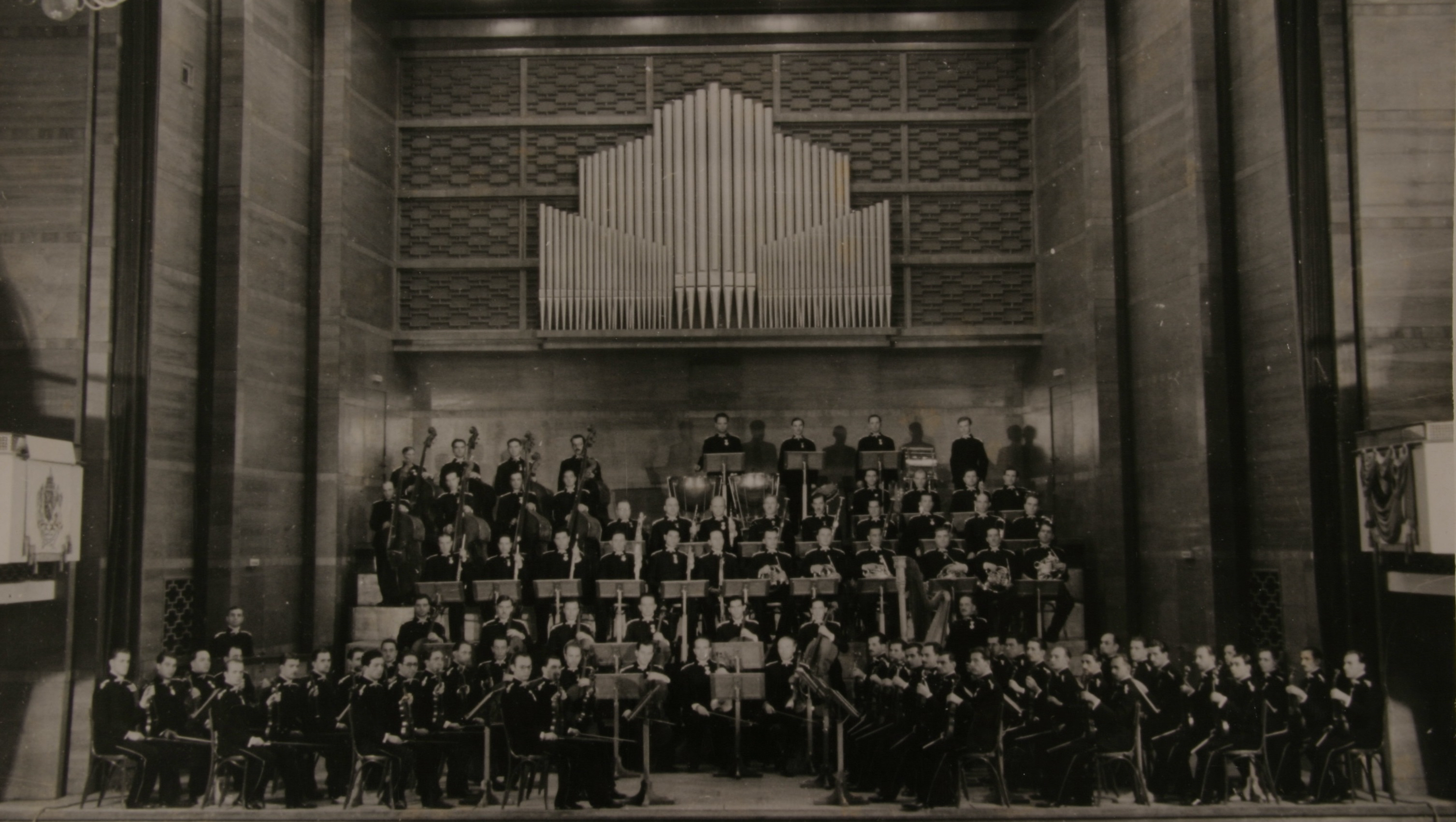
January 12, 2020
PAVEL MADZHAROV
–––––––––––––––––––––––––––
Organ Music and Building in Bulgaria

The 1937 Sauer organ at Bulgaria Hall in Sofia, Bulgaria.
The 1937 Sauer organ at Bulgaria Hall in Sofia, Bulgaria.
Editor's Introduction
This article is the culmination of Pavel Madzharov's work cataloguing the extant organs in Bulgaria and organ works by Bulgarian composers, and is designed to give an overview of the organ culture in the country.
––––––––––––––––––––––––
Pipe Organs in Bulgaria
The history of organ art in Bulgaria is related to the emergence of the first instruments, which come about relatively late compared to many European countries. This is primarily due to religion and politics. Documentation of the earliest organs in the world appears in the third century BCE, and because of the organ's acceptance into Catholic liturgy, the organ was preserved as an instrument. However, in the Bulgarian Orthodox Church, instruments are not allowed in services, only the human voice. In the most active years of organ music in the Catholic world (especially in Europe), Bulgaria did not exist on the political map. As a result, the first documented organ in Bulgaria appeared a decade before the Russian-Turkish War, in 1868. This is the instrument in the Catholic Cathedral of St. Ludwig in Plovdiv. Information about it, however, is limited to the fact that it was replaced by a new, larger organ in 1891. Unfortunately, the latter was damaged irreparably in a fire in 1931.
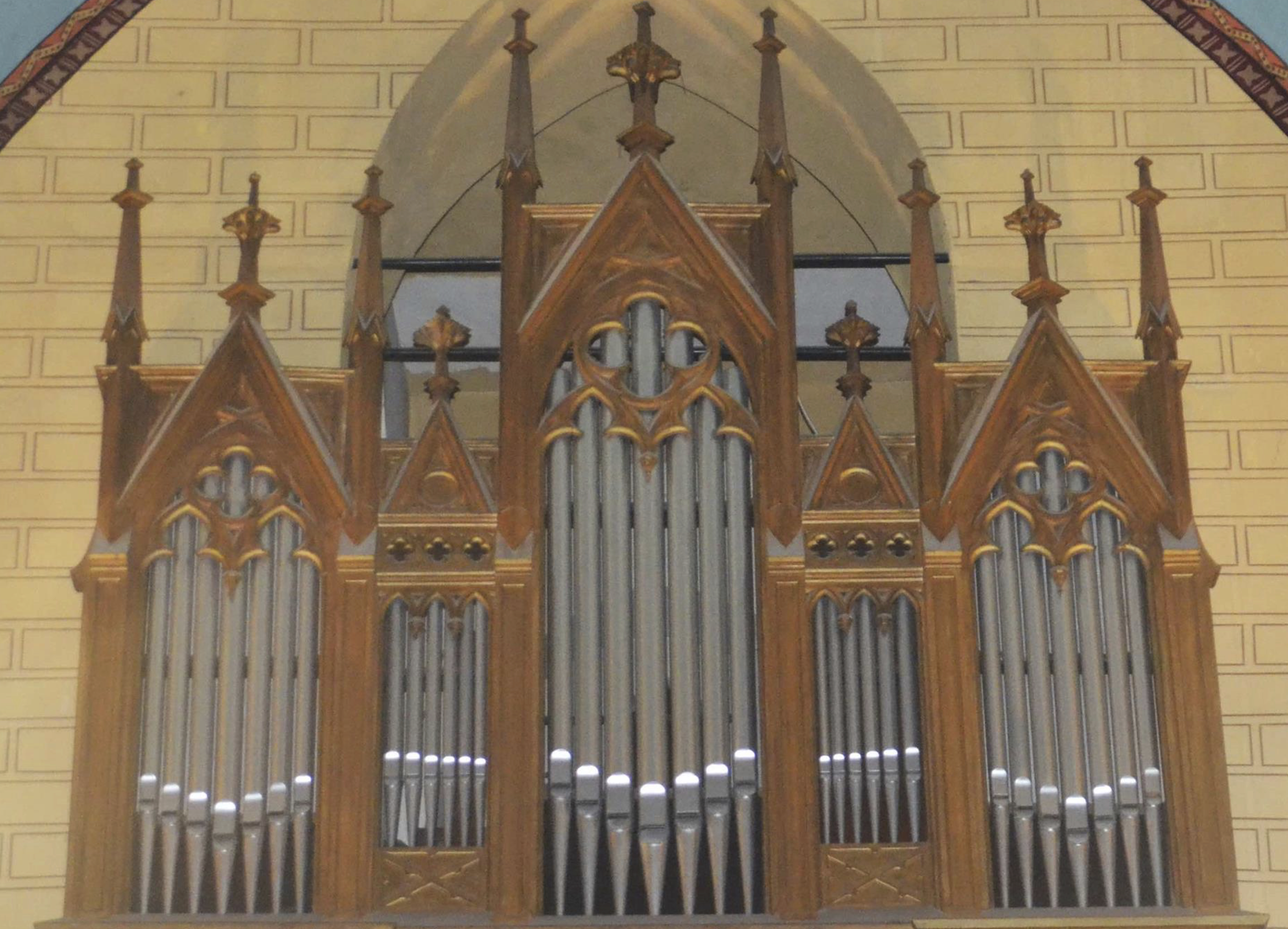
The next instrument came in 1900 at the Catholic Cathedral of St. Joseph in Sofia, which is still the only organ in the Cathedral's history. In 1907 an organ was built in the Catholic Cathedral of St. Paul of the Cross in Rousse, which today appears to be the oldest surviving pipe organ in Bulgaria. The first concert organ in Bulgaria is the 1937 electro-pneumatic Sauer organ in Bulgaria Hall in Sofia from 1937 (pictured at the head of this article). Together with the organ in Sofia Catholic Cathedral, the organs shared a terrible fate: on May 22, 1944 during the American and English bombings over Sofia, the two instruments were completely destroyed. In practice, the process of construction and distribution of organs in our region starts after 1974 with the construction of the second concert organ in Bulgaria Hall.

At the time of writing, there are 24 pipe organs in Bulgaria, which are located in 12 towns and cities. Despite the low number, a large part of the buildings housing the instruments are easily recognizable among the area's people. Pipe organs are distributed both in large and in smaller municipalities. There is one organ each in Dobrich, Pazardzhik, Silven, Smolyan, Shiroka Luka, and Yambol; two each in Blagoevgrad, Varna, Rakovski, and Ruse; four in Plodiv; and six in Sofia. There is a wide range of organ locations in Bulgaria, from the capital of Sofia to a village like Shiroka Luka. The organ is valuable in that it could change and improve the cultural outlook of the locality where it is placed. Regarding the public function of the buildings in which the pipe organs are located, seven are in religious places of worship, 16 are concert organs, and there is one practice organ.
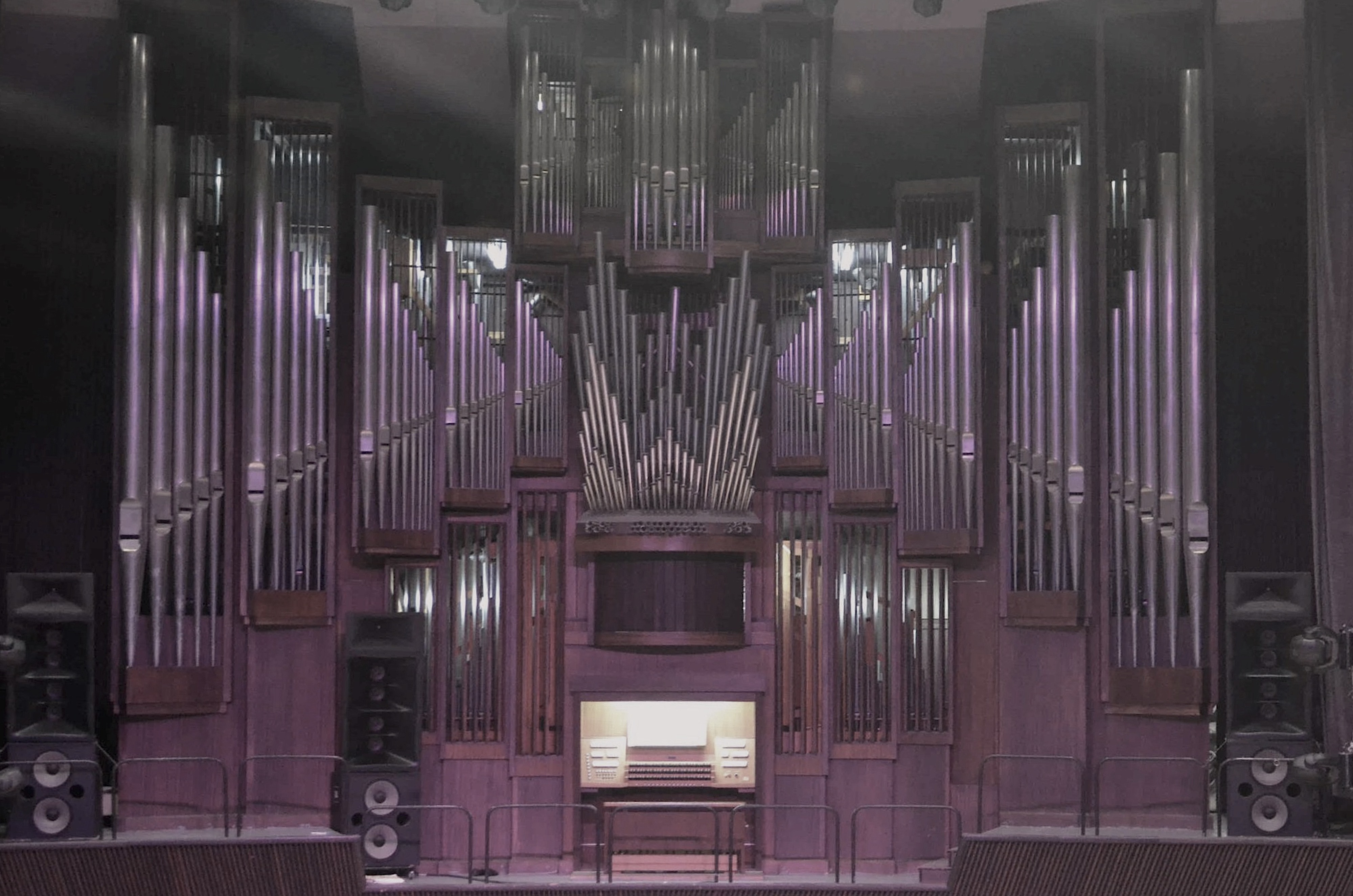
The possession of a pipe organ in music schools and universities or academies where a higher musical qualification can be obtained is essential for the development of Bulgarian organ music. These institutions are well known in Bulgaria: Academy of Music Dance and Fine Arts, National Music Academy, National School of Music and Dance Art, National School of Folklore Arts, Southwestern University. The concert hall organs are located in Bulgaria Hall, Dobrich Hall, Sliven Hall, and the Maestro Georgi Atanasov Concert Hall. Several organs are in multifunctional cultural centers: the Palace of Happy People, the Nikola J. Vaptsarov—1866 Community Centre (Chamber Opera), and the Festival and Congress Center-Varna. The museums, where some of the organs are placed, are of utmost importance for the preservation of the cultural heritage and the development of tourism of the respective cities: Interactive Museum “Bezisten”, Earth and People National Museum, Regional History Museum-Plovdiv in its exposition "Unification of Bulgaria from 1885." There is also an organ in the main building of the regional government in Smolyan.

In Bulgaria, three Evangelical Methodist and four Catholic Churches possess a pipe organ. The common perception of the organ as an instrument characteristic mainly of the religious music of Catholicism, Evangelicalism, etc., is contradicted here. Atypical of most countries' distributions of organs, only 30% of the instruments in Bulgaria are located in religious buildings, while 70% are in public buildings with different functions. I view this as a good thing for Bulgaria, as it indicates numerous possibilities for the placement of possible future instruments.
Every pipe organ has its own features and technical capabilities. At present, 17 organs have between one and 19 stops, four with 20–29 stops, two with 30–39 stops, and two from 50+ stops. Every organ naturally needs constant maintenance. At the time of writing, 16 organs were in perfect condition, six cannot be fully used or need an overhaul, and two are unplayable.
The origins of Bulgarian pipe organs can be divided into organs that were built for the venue in which they are housed (nine), and those which were built elsewhere and reassembled in Bulgaria (15). A large number of the latter were imported through private organizations, while most of the organs built in Bulgaria were a result of cultural policy. The following chart shows when organs appeared in Bulgaria by decade:
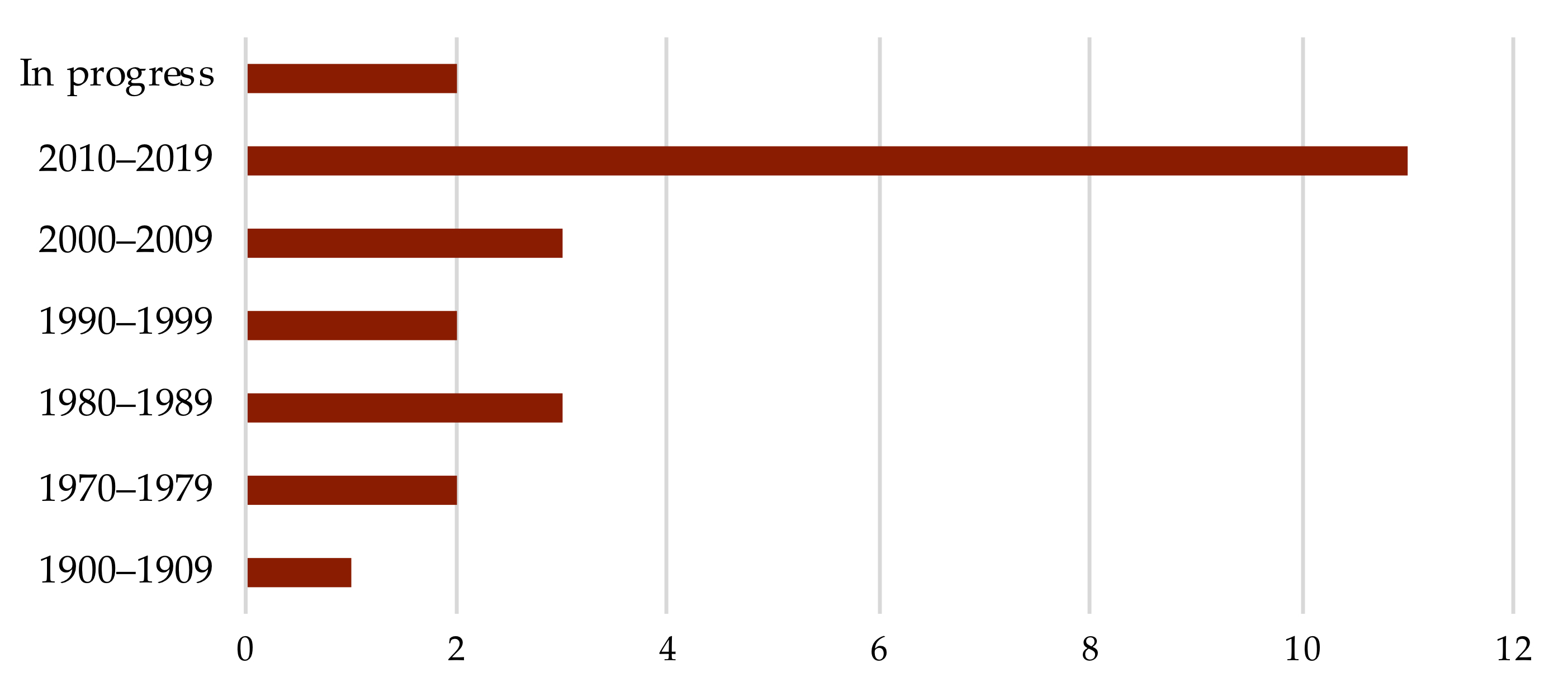

There is a large rise in the number of organs in the last decade. From 2010 to 2019, Bulgaria has gained more instruments than in the 102 years from 1907 to 2009. It is worth noting that 10 of these 13 are smaller (18 stops or less) and 11 were built elsewhere.
Organs in Bulgaria are the products of different builders: Schuke (three instruments), Walcker (two), Ulrich Wetter (two), Steinhoff (two), and one from each of the following: Werner Bosch, Stöberl, Rosen Draganov, Rieger-Kloss, Rieger, Nenninger, Maag, Jemlich, Voit, GENF, Carl Bürkle, Bruno R. Döring, Bosch, Arte Organaria, and one with several builders contributing. Of these, 15 are from German builders, four from Switzerland, and one each from Italy, Czechia, Bulgaria, and Austria, with one of mixed origins. Unfortunately, there is only one professional organ builder in Bulgaria (Rosen Draganov), however, the first fully Bulgarian organ is already under construction.
To summarize, Bulgaria has 24 pipe organs, located in 12 municipalities, in buildings serving many different functions in society. Six of these need an overhaul, but 16 are in excellent condition. Nine were newly built; 15 were moved to Bulgaria, and 10 of these were originally church organs but now serve as concert instruments. The positive aspect is that 13 organs have appeared in the last decade, more than the entire previous 102 years combined. But of these new organs, many are smaller than the older instruments. 15 of the organs were built in Germany. The ratio of organs with a concert, study/practice, and church function is 16:1:7.
Bulgarian Organ Music
There are several articles that discuss Bulgarian organ music, but it is an area which requires much further study. Articles by Konstantin Karaspetrov, Eva Krasteva, and Sabin Levi are significant for future research in this area. There are also 12 volumes of "Organ Music by Bulgarian Composers," compiled and edited by Sabin Levy. The classification in my dissertation also contains detailed information about the history and the type of works.
After the first Bulgarian solo work for organ (Sonata for Organ by Artin Poturlyan, composed in 1972), at least 183 solo works now exist for the instrument by 36 composers. These come in a variety of musical genres and forms, and in a diversity of ensembles. I do not claim that this classification is complete, and I welcome any information from a reliable source.
The beginning of Bulgarian organ composition begins in 1972, and the number of works written in each decade are given in the following chart:
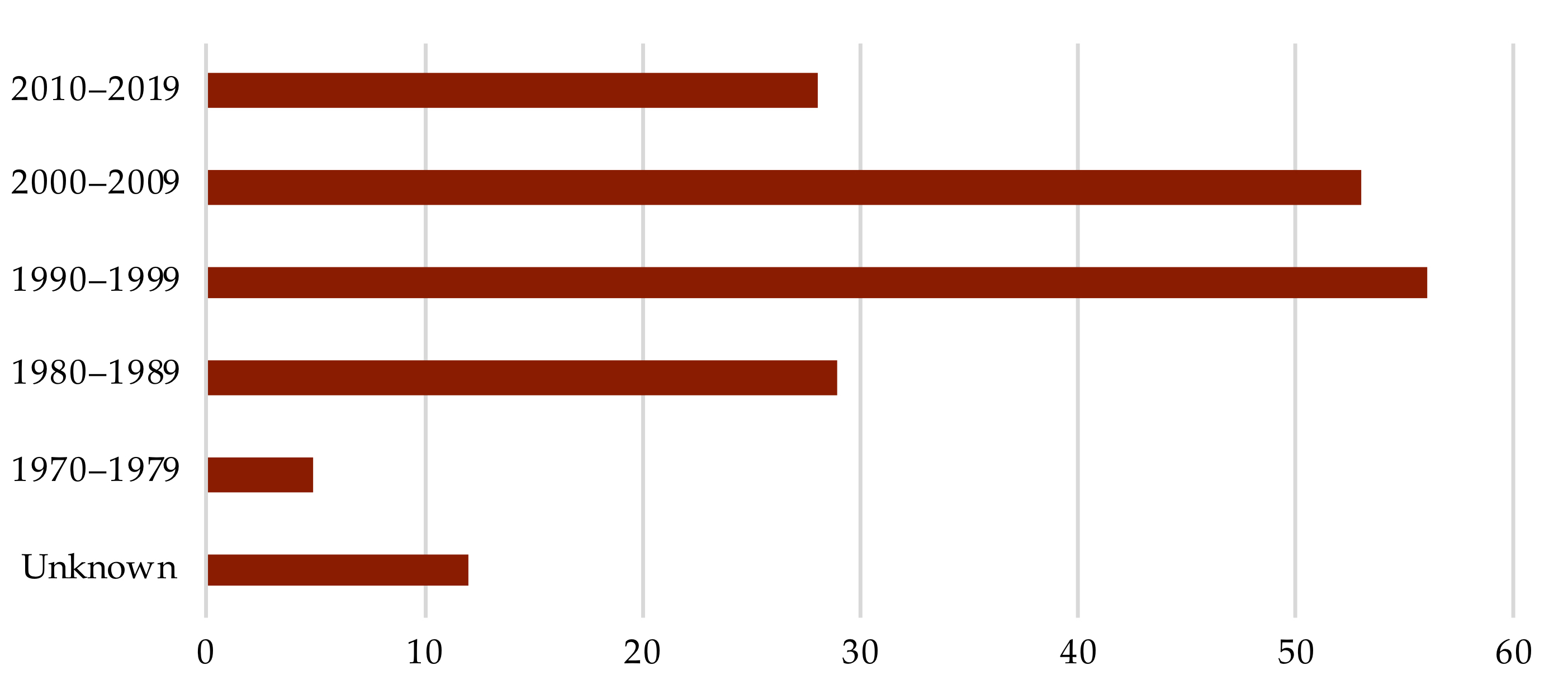

This indicates that the intensity of the creation of organ music peaked between 1990 and 1999. There has been a significant decline between 2010 and 2019, which is curious because the number of new pipe organs in the country is continuing to increase. So why is the number of organ works decreasing? Accessibility of the instruments for practice and for composers' experimentation is difficult. There are also limited possibilities for concerts: some halls require rental fees, and in some places, certain groups of people cannot perform concerts due to their religion. Bulgarian organ and classical music is also not well-supported by cultural institutions. In the music education system, the organ is poorly represented. In music schools there is no organ major or specialization; a Master's degree in organ is offered only at the National Academy of Sciences in Sofia. This has caused many young organists to leave the country. Other contributing factors are that classical music is not all that popular, and as mentioned, several organs are in poor repair.
The majority of Bulgarian composers of organ music were born between 1930 and 1959. Only eight out of 63 Bulgarian organ composers were born after 1960. That being said, the most prolific writers, Sabin Levi (62 pieces) and Rosen Draganov (19 pieces), were both born after 1970. One of the strengths of Bulgarian organ music is the richness of genres; the leading works are chorale praeludia, sonatas, poems, and concertos. The majority of Bulgarian compositions for the organ are solo works (132), while several pieces exist for choir and organ (8), voice and organ (8), and symphonic orchestra and organ (7).
Highly atypical of many national schools of organ composition, nearly 90% of compositions for organ in Bulgaria are on either secular or purely instrumental genres (sonata, arabesque, etc.), and just over 10% are specifically related to sacred texts (chorales).
Organ Music in Bulgaria through the Eyes of Composers and Organists
There is an information gap regarding the opinions of Bulgarian composers and organists on issues related to organ music in Bulgaria. The following information is a questionnaire given to Bulgarian organists and composers from my dissertation research. The systematization and analysis of their views on Bulgarian organ art are of considerable importance, as they could shape the current state of Bulgarian organ music, identify some of the significant problems that hinder its development, and identify some of the possible solutions that could help overcome them. I have attempted to contact all living composers in my classification of Bulgarian organ works in my dissertation. The entire number of respondents was 16: seven composers, four organists, five organist-composers. The survey and its results are given below:
1. Why did you write music for the organ?
Personal interest: 9
Commission: 2
2. What knowledge is necessary in order to write organ music?
Understand the technical capabilities of the instrument: 12
Composer interest: 1
Study of existing masterpieces for organ: 1
Be an organist: 1
3. Why have some organ works had only one public performance?
Listeners' disinterest: 7
Cultural institutions' disinterest: 6
Organists' lack of interest: 1
Poor musical quality: 1
Many reasons: 1
4. Why have many Bulgarian composers only written one organ piece?
Other projects are more interesting: 7
Difficulty in organizing public performances: 5
Result of a certain occasion: 1
5. Why are most Bulgarian organ works for solo instrument?
Greater possibility of a public performance: 6
Personal composer preferences: 5
The organ is a self-sufficient instrument: 4
It's easier to write for solo organ: 1
6. Why has the number of Bulgarian organ works decreased in the last decade?
Decline of culture: 7
Listeners' disinterest: 5
Population decline: 2
7. What would stimulate the development of Bulgarian organ music?
Cultural policy change: 6
Increased education: 4
Listeners' interest: 2
More organs: 2
Organists' interest: 2
8. Is there a uniquely Bulgarian tradition in organ music?
No: 8
There is a beginning: 4
Yes: 3
Part of the reason of the discrepancy between answering "no" or "yes/there is a beginning" could be based on the relative lack of systematic information on issues related to the Bulgarian organ music. It seems that there are beginnings for creating a Bulgarian national organ style, as the process of composing music for an organ has not stopped since 1972. Two of the relatively younger generation (born after 1970) have the highest number of organ works; in the last decade the number of pipe organs in Bulgaria has been higher than those combined over the last 102 years; and Bulgarian concert organists have a broad range of ages from 20 to over 60 years old.
To summarize, personal interest from composers is the main reason for creating organ music in Bulgaria. When writing for the organ, knowledge of the organ's technical characteristics is the most important factor. Disinterest from listeners and cultural institutions are the main reasons why many organ works only receive one performance. The difficulty in organizing performances and other compositional preferences are the reasons why about half the composers who have written for organ have only composed one piece. A change in cultural and educational policy would preserve and stimulate Bulgarian organ music, benefitting both composer and audience. All this indicates that there is no truly Bulgarian tradition organ art yet, but it is beginning.
––––––––––––––––––––––––
The views and opinions expressed in this article are those of the author, and do not necessarily reflect the position of Vox Humana.